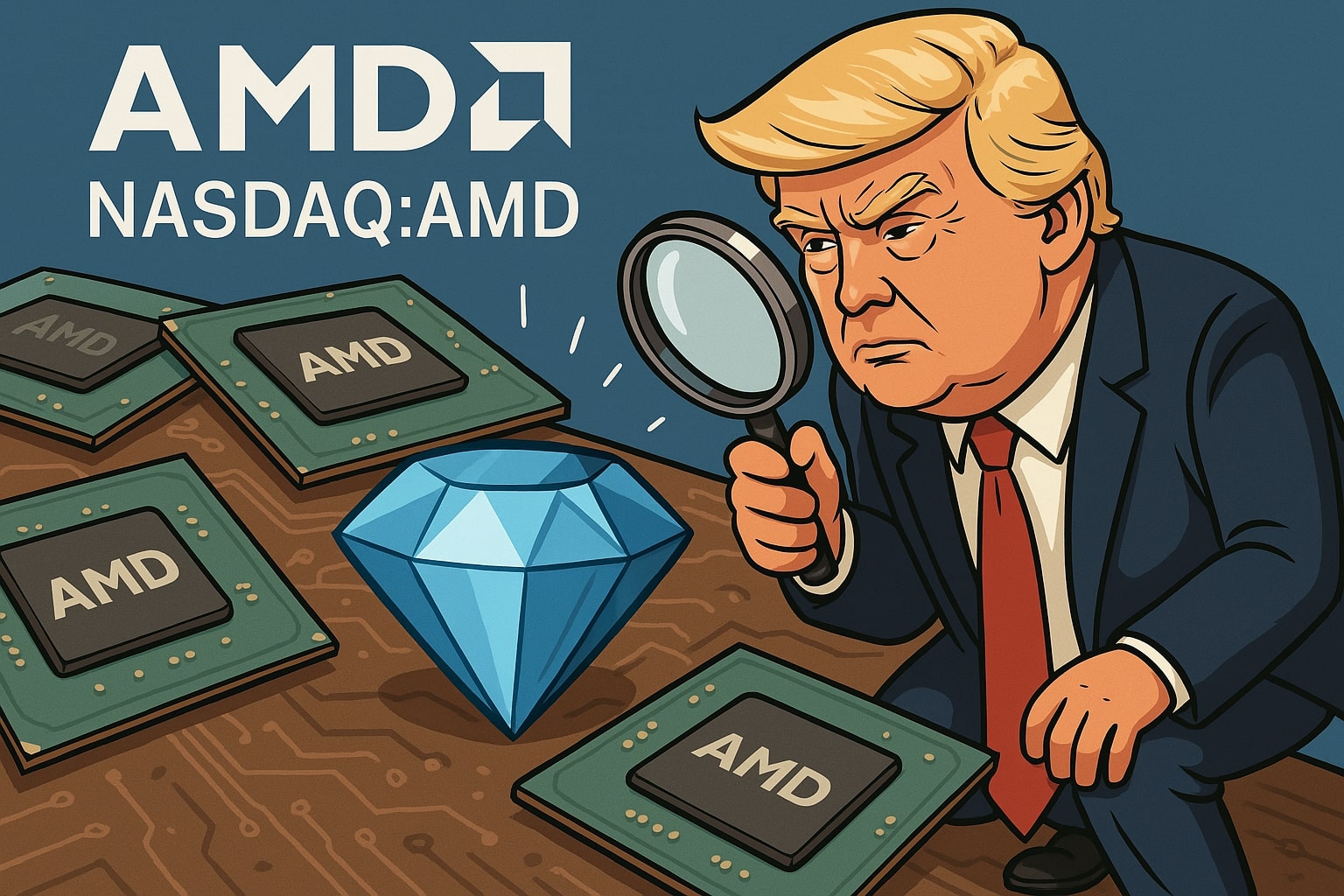
AMD Stock: A Hidden Gem at Multi-Year Lows – Time to Buy or Wait?
Despite recent tariff fears and a 26% drop, AMD’s future remains promising. Is it time to seize this opportunity? | That's TradingNEWS
Advanced Micro Devices: A Strong Buy Opportunity Amid Valuation Lows
Overview of Advanced Micro Devices (NASDAQ:AMD) Stock Performance
Advanced Micro Devices, Inc. (NASDAQ:AMD) has been a prominent player in the semiconductor space, particularly driven by its data center business, which has surged significantly in recent years. However, despite this growth, AMD stock has experienced a substantial 26% drop in the past two months. Much of this decline can be attributed to short-term market panic, particularly fueled by concerns over President Trump's tariff policies. Despite these challenges, AMD stock is trading at multi-year lows, offering a compelling investment opportunity, particularly for long-term investors.
Analyzing Tariff Risks for AMD and the Broader Semiconductor Market
One of the most significant concerns for AMD stock has been the potential impact of tariffs. With approximately 25% of AMD’s total revenue coming from China, retaliatory tariffs could hinder the company's growth, particularly in the Chinese data center market. However, it's crucial to consider that the tariffs themselves are far from certain in the long term. While AMD’s reliance on Chinese market demand is significant, it's also worth noting that the U.S. and China have mutual incentives to negotiate a resolution. President Trump’s recent move to pause some tariffs offers a more pragmatic outlook, suggesting that AMD could avoid the worst-case scenario. At the time of writing, Chinese goods are subject to a 125% tariff rate, while U.S. goods face an 84% tariff rate, but this is likely to remain fluid as trade discussions progress. Therefore, the potential long-term tariff impact on AMD stock might be overstated, creating a value opportunity for investors who view the situation with more optimism.
Valuation and Earnings Growth: A Strong Investment Case for AMD Stock
When it comes to valuation, AMD stock is currently trading at a forward P/E ratio of 20.8, which is relatively attractive, especially when compared to the technology sector's median P/E ratio of 19.6. AMD’s earnings per share (EPS) has grown by nearly 90% over the past year, significantly outpacing the tech sector's median EPS growth of 10%. This impressive growth in earnings is a strong indicator that AMD is undervalued at its current price, particularly considering that the stock has dropped by 22% since the last analysis due to tariff fears.
Looking at AMD’s stock from a technical perspective, the chart shows a strong multi-year uptrend. This support level has been consistent since 2019, and the recent decline brings AMD closer to a breakout point where it could potentially reverse course and move upward. With the company poised to benefit from the AI boom, particularly its exposure to data center growth, there is significant upside potential for AMD stock in the coming months.
The Impact of AI and Data Centers on AMD's Long-Term Growth Prospects
AMD’s data center business has been a critical driver of its revenue growth, and this trend is expected to continue. The company saw a remarkable 69% year-over-year growth in data center revenues, which now account for over half of its total revenue. This growth has been spurred by demand for AMD’s chips in AI applications, as companies like Oracle have signed multi-billion-dollar contracts for its MI355X GPUs. However, despite this success, AMD still faces stiff competition from Nvidia (NVDA), which currently dominates the AI GPU market. While Nvidia has the edge in the AI training space, AMD is positioning itself as a cost-effective alternative, particularly in AI inference, where there is growing demand for more affordable solutions.
The release of AMD's MI350 chip, expected in the coming months, is anticipated to accelerate its efforts in capturing market share from Nvidia. However, Nvidia’s continued dominance in AI training and its strong product offerings mean that AMD will likely remain a secondary player in this market, albeit one that could benefit from increasing demand for more budget-conscious solutions.
Financial Health and Cash Flow: AMD’s Strong Position for Growth
Despite some competitive challenges, AMD maintains a strong balance sheet, with $5.1 billion in cash and just $1.7 billion in debt. This robust financial position provides the company with the flexibility to continue investing in research and development, as well as weather any short-term disruptions in the market. The company’s net cash balance makes it less vulnerable to financial pressures compared to other semiconductor companies, giving it a solid foundation for future growth, particularly in the AI and data center markets.
Risks to AMD’s Growth and Investment Thesis
While AMD’s long-term prospects appear promising, there are several risks to consider. The most immediate risk is the continued dominance of Nvidia in the AI market. Nvidia has established a near-monopoly in the AI training market, which gives it significant pricing power and the ability to reinvest heavily in innovation. This could make it difficult for AMD to capture significant market share in this space, particularly if Nvidia continues to expand its offerings and capabilities.
In addition, AMD faces the risk of competitive pressure from other companies like Intel (INTC), which has significantly higher R&D budgets and a larger market presence. AMD’s ability to continue innovating and maintaining its competitive edge will be critical to its long-term growth, especially in the face of such formidable competition.
Moreover, AMD’s reliance on AI infrastructure and data centers means that its fortunes are closely tied to the broader tech cycle. Any slowdown in AI spending or data center investments could directly impact the company’s revenue growth, particularly if macroeconomic factors, such as tariffs or a global recession, reduce demand for tech products.
Is AMD Stock a Buy, Sell, or Hold?
At its current valuation, AMD stock presents a compelling buy opportunity for long-term investors. The stock is trading at its lowest earnings multiple in nearly a decade, and with a strong growth trajectory in its data center business, AMD is well-positioned for long-term gains. The company’s exposure to the AI boom, coupled with its solid financials and strong balance sheet, provides a favorable risk-reward profile for investors with a 3-5 year investment horizon. While AMD faces significant competition from Nvidia and other semiconductor companies, its growth potential in the AI and data center markets makes it a top pick for investors seeking exposure to the next generation of technology.
For those interested in tracking real-time price action and making informed investment decisions, follow AMD stock closely through this link.
















